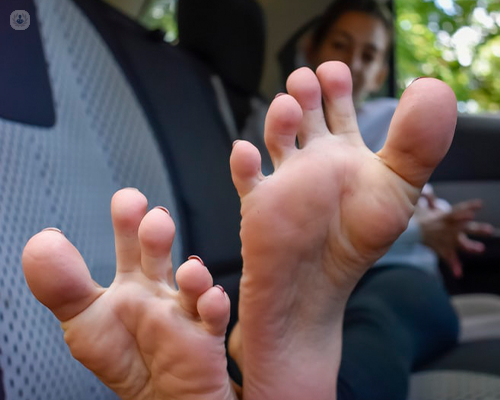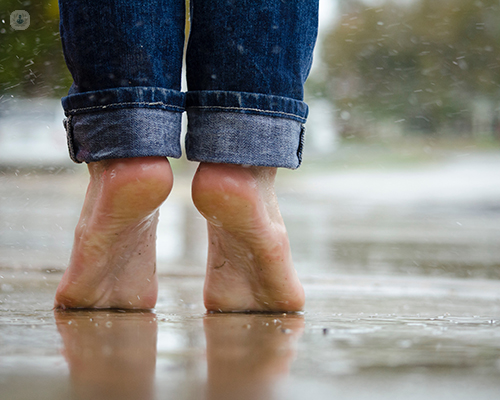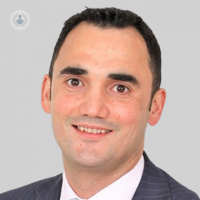Arthritis in the big toe: how to relieve symptoms
Autore:Hallux rigidus, or in other terms, big toe arthritis, occurs when the big toe becomes stiff. In some cases, the condition can also cause swelling and extreme pain, as well as a loss of upward and downward toe motion.
In our latest article, highly esteemed consultant orthopaedic surgeon, Mr Shafic Al-Nammari, describes in detail how hallux rigidus (big toe arthritis) occurs, what the main treatment options and symptoms are, as well as revealing how people suffering from this kind of arthritis can relieve pain and flareups at home.

What is hallux rigidus?
Hallux rigidus indicates a stiff big toe, which is actually the main symptom of the condition. Hallux rigidus is a type of wear and tear arthritis known as osteoarthritis.
How does it develop?
In the vast majority of cases, there is no clear underlying cause. Generally, it relates to simple wear and tear occurring in the joint due to the tremendous forces that pass across it on a day-to-day basis.
This hallux rigidus (big toe) joint takes a force equal to approximately two times the average body weight with each step when walking. Forces generated during sport and exercise can be far greater and are all focused on what is really a rather small joint.
In some cases, there are clear causes, with the main ones being previous injury or fracture, rheumatoid arthritis or gout.
What are some of the main early symptoms of big toe arthritis?
There are three main early symptoms of hallux rigidus: stiffness, pain and swelling.
A loss of toe motion upwards (dorsiflexion) is also another symptom most commonly noted early on. At a later stage, loss of motion downwards (plantarflexion), locking and catching of the joint can occur.
In early arthritis, the pain is generally felt more over the top (dorsum) of the joint particularly with dorsiflexion of the joint. This is due to impingement.
How can I relieve a flareup at home?
There are several simple home remedies that can help relieve a potential flareup. The main home remedies you can consider include the following:
- optimise your shoe wear
- limit aggravating activities
- If you have a tight calf muscle, it can be helpful to work on stretching exercises for this. Unfortunately, exercises for the toe itself can often aggravate the pain so caution is indicated.
- over-the-counter painkillers

What are my treatment options?
It is generally wise to trial non-surgical treatments prior to considering surgery. In some cases of mild arthritis, an injection into the joint may provide meaningful pain relief but it may not be long-lasting and it is not permanent.
For those with ongoing symptoms that are affecting quality of life, then surgery is often an attractive option. Motion and joint-preserving procedures are preferred wherever possible but it is worth noting that even joint fusion surgery has good results when indicated.
The main surgical procedures available to patients suffering from big toe arthritis include the following:
- Cheilectomy: this small procedure simply removes the bone spurs. It preserves joint motion and can be very successful, particularly for early arthritis.
- Osteotomy: this involves realigning the joint. It is only indicated in certain circumstances, but preserves joint motion and can be helpful in mild to moderate cases.
- Joint replacement: much like the hip or knee, the big toe joint can be replaced. It is reserved for more advanced cases of arthritis. Not all arthritic toe joints will benefit from this treatment.
- Fusion: if the joint is very badly damaged, then fusing it shut is a good choice, as this operation has a very high success rate. Although it sounds alarming, the loss of motion of the main toe joint is well accommodated by the other joints of the foot and the pain relief is excellent.
Mr Shafic Al-Nammari is a highly qualified, mightily revered Ipswich-based orthopaedic surgeon who specialises in conditions relating to the foot and ankle, but to mention a few. Visit his Top Doctors profile today to make an appointment with him.


